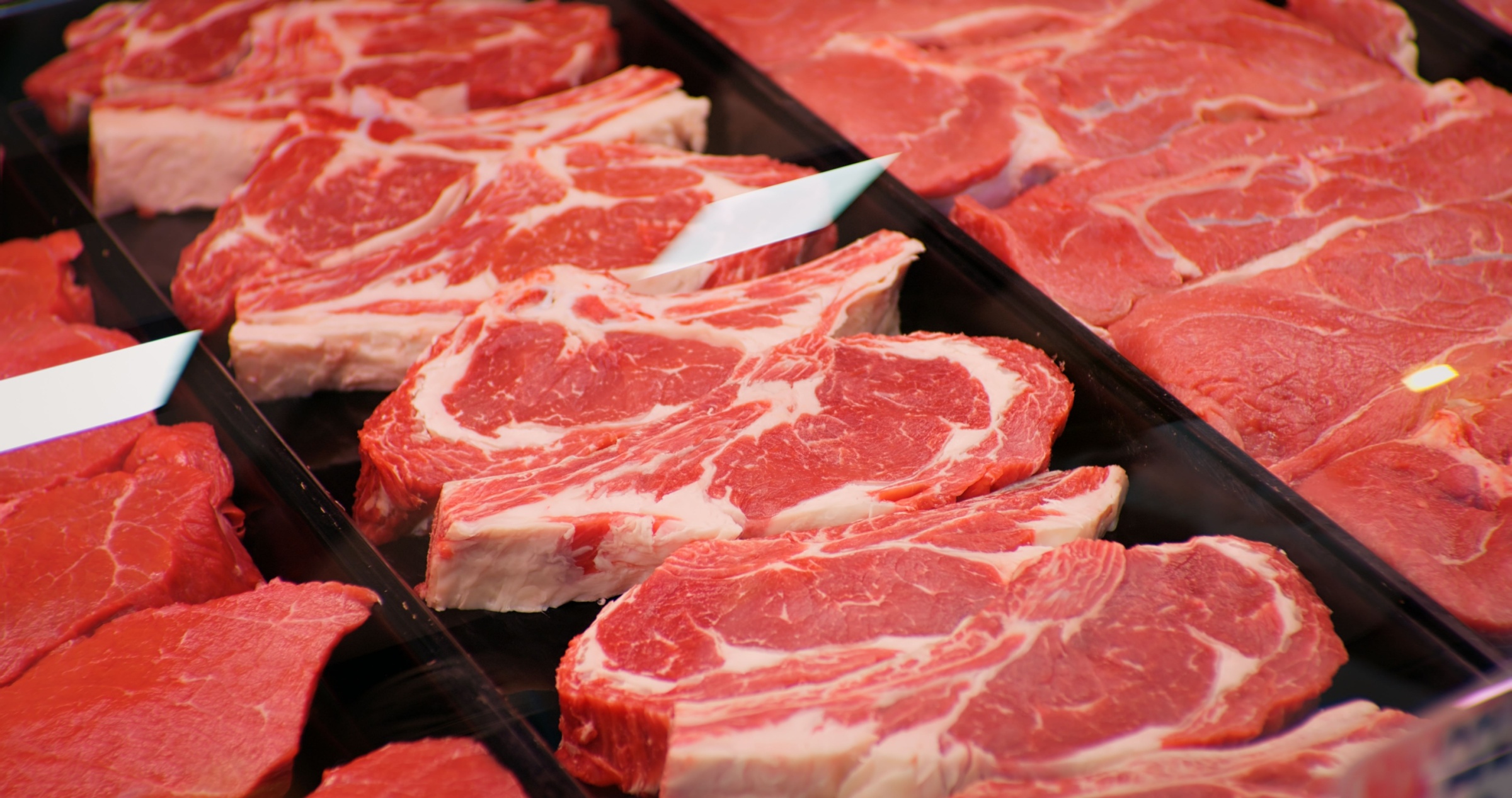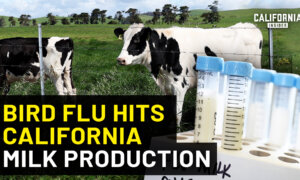There are two forms of iron—the form in animal foods is called heme, while the iron in plant foods is called non-heme. Iron is an essential nutrient with its effects depending on the form consumed, according to an August animal study published in Nature Metabolism (NM).
Researchers from Harvard T.H. Chan School of Public Health found that higher intake of heme iron from red meat and other animal foods may increase the risk of Type 2 diabetes by 26 percent. In contrast, non-heme iron intake from plant foods was not associated with an elevated risk.
The researchers suggest that following a plant-based diet can be effective in decreasing the likelihood of developing chronic disease.
Study Builds on Previous Research
Although earlier epidemiological research has linked heme iron intake from red meat to higher diabetes risk, the NM study provides greater clarity with further evidence that explains the factors underlying the link.
“Compared to prior studies that relied solely on epidemiological data, we integrated multiple layers of information, including epidemiological data, conventional metabolic biomarkers, and cutting-edge metabolomics,” lead author Fenglei Wang, research associate in the Harvard T.H. Chan School of Public Health’s Department of Nutrition, said in a press release. This study provided a “more comprehensive understanding” of the association.
The Evidence
Data was assessed from cohort research involving 204,615 individuals. Using 36 years of dietary reports, food intake of heme, non-heme, and total iron, as well as supplemental iron was noted and compared with diabetes status.
In addition, using smaller subsets of individuals, plasma biomarkers related to insulin, blood sugar, and blood lipids, along with those pertaining to inflammation and iron metabolism were examined. Small molecular metabolites, such as those coming from chemical or food breakdown, were also measured.
The results showed:
- Those with the highest heme iron intake had a 26 percent greater Type 2 diabetes risk than those with the least intake.
- Heme iron was responsible for more than half of the Type 2 diabetes risk linked to red meat and a moderate percentage of the likelihood associated with several Type 2 diabetes dietary patterns.
- No links were observed between non-heme iron intake and Type 2 diabetes risk.
Higher heme iron intake also linked to abnormal biomarker and metabolite levels associated with Type 2 diabetes, including:
- Elevated levels of leptin, triglycerides, C-peptide, C-reactive protein, and markers of iron overload
- Reduced levels of healthy biomarkers, such as adiponectin and high-density lipoprotein cholesterol
- The presence of a dozen blood metabolites—including L-lysine, L-valine, uric acid, and several lipid metabolites
According to the researchers, the results have important implications for dietary guidelines to reduce Type 2 diabetes risk.
“This study underscores the importance of healthy dietary choices in diabetes prevention,” corresponding author Frank Hu, Fredrick J. Stare professor of nutrition and epidemiology said in the press release. “Reducing heme iron intake, particularly from red meat, and adopting a more plant-based diet can be effective strategies in lowering diabetes risk.”
The study also raises concerns about adding heme iron to plant-based meat alternatives, which fosters a meat-like flavor and appearance. The researchers stated that further investigations are needed to determine the health effects of the practice.
Differing Opinions
The Epoch Times reached out to the American Meat Science Association, as well as other members of the meat industry, who declined comment on the study. Other research has found
various benefits to including meat in the diet.
Researchers in the study advocated following a “more plant-based diet,” but didn’t elucidate how much they recommend reducing red meat intake.
Nutritionists may have differing views on the topic. The stance of the American Academy of Nutrition and Dietetics is that well-planned vegetarian and vegan diets provide all essential nutrients and can help prevent and treat certain diseases. They are also appropriate for all stages of life, including childhood and pregnancy.
In contrast, some nutritionists believe that including a judicious amount of meat in a healthy eating plan may be beneficial or even essential. The findings from the study should be put in a broader context and highlight the role of red meat in a healthy diet, dietitian Amie Alexander told The Epoch Times in an email. “In addition to iron, red meat is a significant source of high-biological value protein, essential amino acids, and various micronutrients like zinc and B vitamins,” she said.
Alexander has often encouraged her clients to include lean cuts of red meat in moderation, accompanied by a variety of plant-based foods that provide fiber and antioxidants, which might potentially offset some of the risks associated with red meat consumption.
“Pay attention to meat quality, sticking with grass-fed or organic whenever possible due to their more desirable fatty acid profile with fewer noxious additives,” she advised.
Those at risk of developing Type 2 diabetes should take extra precautions, added Alexander. This involves having regular biomarker checks—such as blood glucose levels, lipid profiles, and inflammation markers—to allow for dietary readjustment as n.
Other Risks Linked to Heme Iron
The NM study is the latest research implicating heme iron as a health risk, but earlier studies have linked it to other chronic diseases.
A meta-analysis published in the journal Nutrition, Metabolism, and Cardiovascular Disease exploring the effects of heme and non-heme iron on cardiovascular risk found results similar to studies on diabetes. After looking at 13 research papers involving 252,164 individuals, they found a higher heme iron intake linked to an increased risk, but no health implications were associated with non-heme iron intake.
Other studies found a correlation between high heme iron intake and an elevated risk of some cancers, including breast, esophageal, and, especially, colorectal. It is also associated with metabolic syndrome, which refers to a combination of abdominal obesity, high blood pressure, unhealthy blood lipids, and high blood sugar.
Heme and Non-heme Iron Sources
The body will make red blood cells—which transport oxygen to all body tissues—regardless of the food source of iron. In addition to red meat, heme iron sources include poultry and seafood. Non-heme iron sources include beans, legumes, nuts, spinach, dark chocolate, and fortified grains.
Heme iron has less bioavailability, which refers to the portion of the mineral that the body absorbs and utilizes. While absorption is not the only factor that determines bioavailability, it plays a key role. Roughly 25 percent of heme iron and 17 percent of non-heme iron is absorbed, and an estimated 14 to 18 percent of heme iron and 5 to 12 percent of non-heme are bioavailable.
How to Increase Absorption of Non-Heme Iron
Taking in non-heme iron with vitamin C foods
enhances absorption because they convert it to a more soluble form. They also counteract components in certain foods that inhibit absorption, such as calcium in dairy products and polyphenol antioxidants in coffee and tea.
Vitamin C foods include:
- Strawberries
- Citrus fruits
- Broccoli
- Tomatoes
- Sweet peppers
Final Thoughts
A substantial amount of research points to health concerns associated with overeating red meat. After looking at studies to date on the topic, a
2020 review suggested that the preponderance of the evidence indicates the value of eating more plant foods and less red meat.
The review evaluated the evidence linking red and processed meat to disease and found that while more evidence is necessary, epidemiologic data showing links with certain chronic conditions, such as Type 2 diabetes, is “large and consistent.”
Even though some scientists feel more research is necessary to more fully explore the health effects of red meat, it appears there may be much to gain by adopting a more plant-based diet. That diet could include healthy grass-fed meats in smaller amounts. Organ meats are particularly nutritious.












